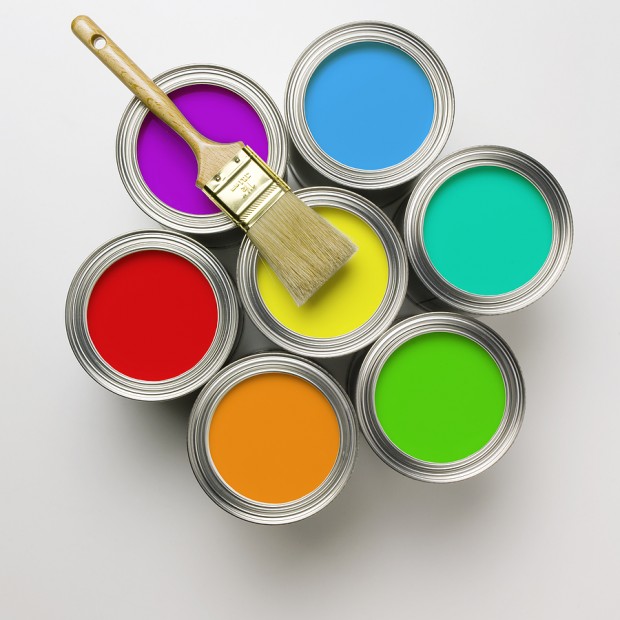Paint goes way beyond a color. Yes, it’s pretty important, but color selection isn’t the only choice you’ll have to make. At Square Cow Movers, we get the opportunity to see a lot of paint finishes, so we wanted to share some painting information we’ve learned along the way.
Why Paint Finishes Matter
When you pick out paint you’ll have to choose a finish. This isn’t just a matter of what the paint will look like on the wall – finishes have pros and cons depending on where and how you’re using the paint.
Matte – Matte, also sometimes called Flat, has a very consistent color that lacks any kind of sheen. Mattes are porous so they don’t handle moisture or cleaning well, and they can be easily scuffed up. Use a matte finish for ceilings, to hide surface imperfections or on walls in very low traffic areas.
Eggshell – Eggshell has a little more sheen than matte finish, making it more durable and giving the color depth. This is the most popular finish and works well for just about any type of interior wall.
Satin – Satin is slightly glossier than Eggshell, but still subdued enough that there isn’t an abundance of shine. This is also one of the most commonly used finishes because it is very durable, handles scrubbing well and can withstand moisture. This finish is great for bathrooms, kitchens and kids’ rooms.
Semi-Gloss – This somewhat glossy finish is more reflective than Satin, but offers a bit more durability. Consider Semi-Gloss finish when painting rooms that require more cleaning and have a high level of moisture like bathrooms and laundry rooms.
Glossy–This high gloss finish is rarely used due to its extreme sheen, laminated look. However, this could be the ideal paint if you want to do something more decorative with your trim or cabinets.
Matching an Existing Paint Color Perfectly
If you’ve moved into a new home and love the color of one room or need to make touchups, then color matching is a must. Luckily, these days technology has made the art of color matching virtually fool proof. Birmingham painting company Prestige Painting has put together an excellent overview of how the latest paint color matching tools work for those that want to know the science behind it and how to ensure you get the most accurate color match possible.
VOC Considerations
VOC refers to Volatile Organic Compounds. These are gases that are emitted from products, including paint. The EPA has found that VOCs can have negative effects on a person’s health, and it’s best to avoid them whenever possible.
The VOC level should be clearly labeled on the can and not exceed 250 grams per liter if it’s a flat finishes or 380 grams per liter for any other finish. These are the maximum limits set by the federal government. Luckily there are now many low and even no VOC paint options to choose from.
Don’t Forget the Primer
Rolling on a layer of primer before the paint is recommended in most situations. It’s an especially good idea if you’re painting over a dark color or patched holes and cracks on the wall. Primer will help the color adhere better, makes the paint more durable and reduces the number of layers needed to get a nice even finish.
Tinted Primer – painting pros swear by tinted primer if you want to thoroughly cover existing paint and create the best finish. Rather than using the standard white they have the primer tinted grey or a color similar to the paint.
Paint with Primer–If you aren’t covering a dark existing color and want to start laying down color right away then a paint plus primer product is what you want to look for. You’ll still need to do two layers, but you’ll start seeing the final result quicker.
Now that you know what to look for, choosing a color will be the hardest part of painting!
Original Source: https://squarecowmovers.com/choosing-paint-its-more-of-an-art-form-than-youd-think/
Image Source: movingwithphil

